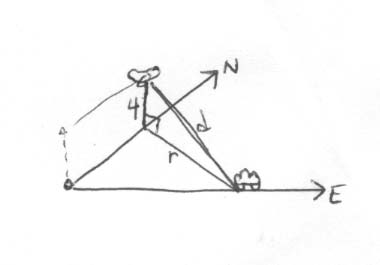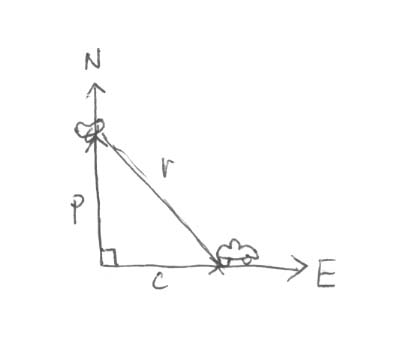Science:Math Exam Resources/Courses/MATH110/April 2011/Question 09/Solution 1
First I will find a formula describing the distance between the car and the plane.
I can draw a triangle whose sides are as follows: the plane's height above the ground, the distance between the plane and the car (denoted d), and the distance between the position of the car and the plane if both were on the ground (r). The triangle looks like this:
Because my triangle is a right triangle, I can relate its sides using the Pythagorean theorem. So I have
If I look down on the plane and car and ignore the height difference, I can find the distance between their positions on the ground (denoted r before) by using another right triangle, drawn here
Where is the distance the plane has traveled and is the distance the car has traveled. These are all related in the formula
I can then plug this into my distance formula found above to get an equation in terms of the car's distance (c) and the plane's distance (p), which relates to the information I was given in the statement of the problem.
I can now differentiate with respect to time to get:
or
Now, we already have that km/h and km/h. To solve for we need p, c and d. However, we know that the plane and car have been traveling for one hour, and have therefore gone km and km respectively. These are the values of p and c. To find d, we plug p = 600 and c = 100 into our original distance formula above to get . Plugging these all into our equation that describes we get:
(As mentioned in the problem, you don't need to compute the answer, I just added it to give you a sense of the value.)
















